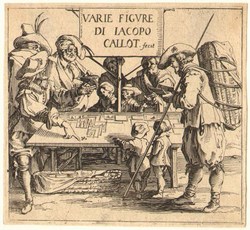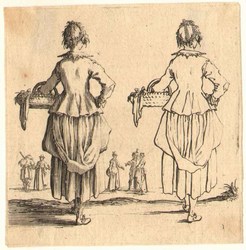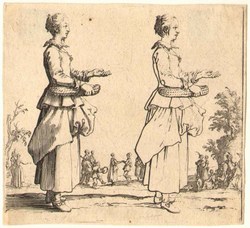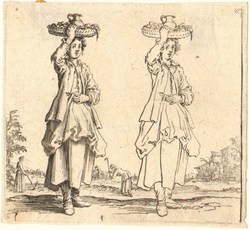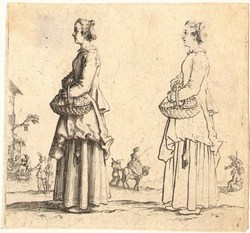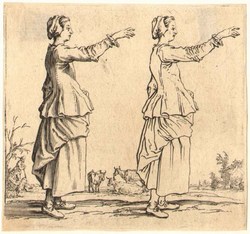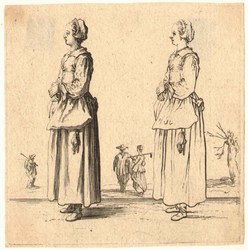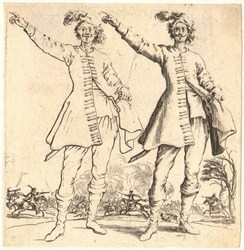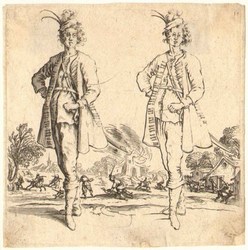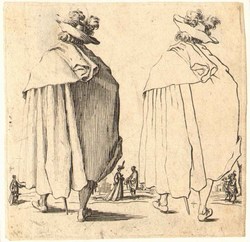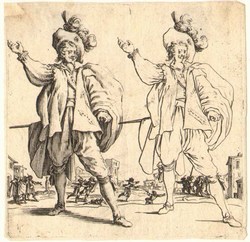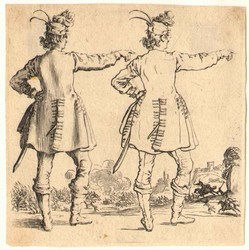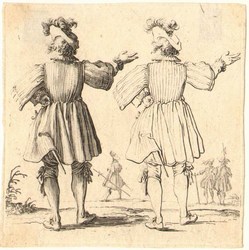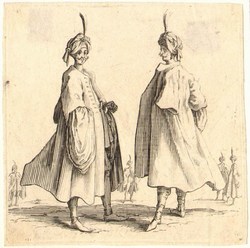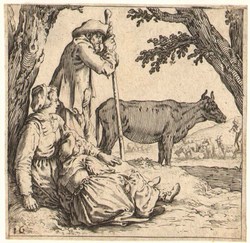Fifteen from
a series of sixteen plates. The date of the set
remains discussed.
Lieure considers the plates were engraved at different
dates, but that the majority still belong to the
Florentine period (1611-21): he dates thirteen of them
(the ones representing the same character twice) from
1617. He also notes that the backgrounds added in the
second state of those thirteen plates are technically
similar to those executed after Callot's return to Nancy
and, despite arguing that Callot is named as 'Iacopo' on
the frontispiece (a signature, Lieure says, Callot
stopped using from 1618, when he started signing as
'Iacomo'), concludes that the backgrounds as well as two
plates (Lieure 404, 405) and the frontispiece were
executed after Callot's return in Nancy (1621). In
Lieure's argument, the first thirteen plates of 'Varie
Figure' appear like a first try announcing the
'Caprices' set (c.1617). Ternois (see catalogue of the
exhibition 'Jacques Callot', Nancy, 1992, No. 285-300)
disagrees, noting that in no way 'Varie Figure' can be
presented as an experiment technically inferior to
'Caprices': the manner is bold, controlled, and the
drawings related to the set are more naturalistic than
mannerist, thus contrasting with the figures in
'Caprices'. He therefore sets the execution of 'Varie
Figure' after Callot's return in Lorraine in 1621.
Meaume dates the whole set from 1623.
click on
the thumbnails to see a larger image
